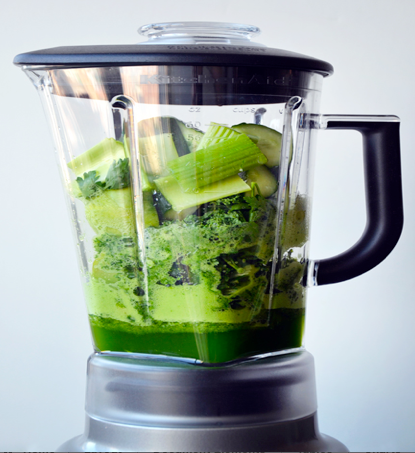
Written by Judy E, Marshel, PhD, RD, CDN
Juicing is a powerful way to get incredible doses of healthy vitamins and nutrients into your body. It can have dramatic positive effects. Fresh vegetable juice helps to give you more energy, lower your chances of contracting chronic disease and may even accelerate weight loss.
Specifically, juicing :
- Increases your vegetable intake. Juicing allows you to consume more vegetables than you ordinarily would.
- Helps to suppress hunger pangs, which means you can avoid succumbing to unhealthy foods that go straight to your waistline.
- Boosts your immune system by supercharging it with concentrated phytochemicals.
- Is convenient. Juicing takes just a few minutes and gives you fresh, delicious, healthy juice that satisfies you. This means you eat less junk food.
- Increases your energy, The goodness of juicing makes you feel great and gives you more energy. It is a great source of nutrients, low in both calories and sugar. You’ll be much more likely to go outside and do something active when you make juicing a part of your lifestyle.
What Is Best To Juice?
Generally speaking, vegetables, especially the green vegetables, are much better for you to juice than fruit. Vegetable juices fill you with beneficial nutrients and antioxidants. While fruit is healthy, it does contain natural fructose, which is a form of sugar. Although it is natural, too much fructose can raise your blood sugar and insulin levels, increasing fat storage. It is best to add a small amount of fruit for a touch of sweetness to your juice… and to make the base of the juice from vegetables.
Beware of vegetables that are very sweet, like carrots. While they are very nutritious when consumed whole, if you consume too many of them juiced, the amount of sugar and fructose you are adding to your diet could be over the top.
Although fresh fruit is so much healthier than the high fructose corn syrup you’ll find in many soda drinks these days, we still encourage moderation.
The best veggies to juice include the following:
- Cucumbers, which are very cleansing and good for skin health.
- Celery, anti-inflammatory and alkalizing; also said to lower blood pressure.
- Beets, a super liver cleanser and great vegetarian source of iron.
- Carrots, rich in beta-carotene, beneficial for eyesight, and also a great liver/gall bladder cleanser. Use caution with carrot juice, as it’s also high in sugar.
- Spinach (occasionally), high in iron, very alkalizing, and great for skin health.
- Wheatgrass, overall great detoxifier and also alkalizing.
- Fennel, excellent for digestion, reduces bloating. Great licorice-like flavor.
- Romaine lettuce or red bell peppers. Very high in vitamin C.
- Herbs are great, too; use parsley, cilantro, and ginger (good for digestion and cleansing). Throw in some raw garlic if you’re brave as it is great for immune health.
How Long Can You Store the Juice?
For the most nutritional benefit, try to drink your freshly made juice within 15 minutes of making it. That is because as the juice gets exposed to air, its live enzymes begin to degrade, therefore decreasing the nutritional content. Also, always keep your juice in the fridge or a cooler if traveling if you don’t drink it right away.
If you have a slow masticating juicer or twin gear juicer, you can store your juice for up to 24-36 hours. If you have a Juice Presser, up to 72 hours. (Refer to types of juicers below).
What About Fiber?
When you juice, you may not be getting all the fiber that’s in whole fruits and vegetables. Many juicing machines extract the juice and leave behind the pulp, which has fiber.
So you don’t miss out on the fiber, you can add some of the pulp back into the juice. Also, include fresh fruit and vegetables in your diet daily.
Types of Juicers?
There are different types of equipment to use to juice:
- Blenders, NutriBullet, Magic Bullet. This type of equipment “purees” everything you put into them, including the fruit and vegetable’s fibrous parts. Sometimes, if you use a regular blender you need to add water if it becomes too thick to get the consistency you prefer.
- Juicers. Juicers oftentimes separate the juice from the pulp. There are 2 types:
- Centrifugal juicers have an upright design and juice by shredding fruit and veggies into a pulp while they spin rapidly to extract the resulting liquid. These are the most common ones and are relatively inexpensive for all the health benefits they provide.
- Masticating juicers have a horizontal design that crushes and squeezes the juice out of vegetables and fruit. This produces both a higher quality and quantity of juice than most centrifugal juicers. The design is also much more effective when juicing highly nutritious greens like spinach, kale and wheatgrass.
To learn more about the different types of juicers available, check out the Consumer Report: Juicer Buying Guide. The link is http://www.consumerreports.org/cro/juicers.htm
Tasty Recipes
Interested in making some healthy juices? Try some of the recipes below.
The Veggie Delight
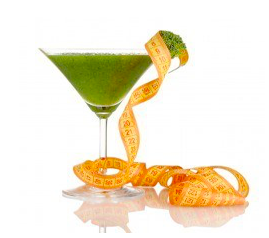
If you are not much of a vegetable eater, this drink might be a good one to start off with. It has lots of healthy vegetables, but the sweetness of the orange and carrots means you’ll barely taste them.
Serves: 2
Ingredients
- 2 Oranges
- 2 Carrots
- 1/4 head of lettuce
- 1 celery stick
- 1/4 head of cabbage
- 2 large branches of broccoli
Preparation
- Use a citrus juicer for the oranges and add it to the collection jar with the ice.
- Run the carrots, celery, cabbage and lettuce through the juicer.
- Stir to blend well and enjoy.
Healthy fact: Carrots are rich in antioxidants and phytochemicals. These can help regulate blood sugar and improve immune health. Amazingly, they can actually delay the effects of aging
Source: http://www.healthambition.com/juicing-recipes-for-weight-loss/
The Green Machine
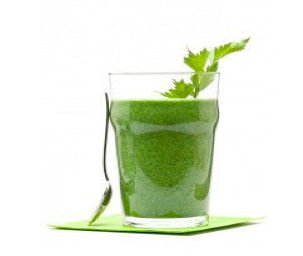
This drink is full of green power from chlorophyll, rich in antioxidants and quite low in calories. The lime juice nicely tops off the flavor to give it a zesty appeal.
Serves: 2
Ingredients
- 2 Carrots
- 1 Cucumber
- Parsley (1 small bunch)
- Chard (1/2 bunch)
- Spinach (1/2 bunch)
- Kale (1 bunch)
- Celery (1-2 stalks)
- the juice of a lime
Preparation
- Squeeze the lime first and pour the juice into the collection jar with a few ice cubes.
- Juice the greens in tightly packed balls in between the harder carrots, cucumber and celery.
- Mix it up and slowly sip.
Healthy fact: Did you know that per calorie, Kale has more calcium than milk? This helps in strengthening bones, contributes towards a healthy metabolism and helps prevent osteoporosis. The vitamin C also helps maintain joint flexibility.
Source: http://www.healthambition.com/juicing-recipes-for-weight-loss/
The Power Up Punch
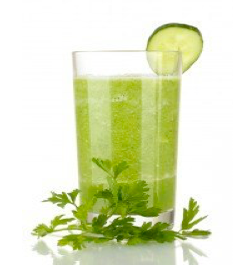
This drink is filled with vitamins and minerals and has a delicious tang to it from the lime and pineapple!
Serves: 4
Ingredients
- 1/3 of pineapple
- Half a cucumber
- Spinach (1 handful)
- 2 apples
- Juice of 2 fresh limes
- Ice (1 cup)
Preparation
- Juice the lime separately in a citrus juicer and pour it into your collection jar with the ice. This helps prevent oxidization of the juice.
- Cut up the pineapple and apples so they are small enough to fit through your juicer’s feeder.
- Juice all the ingredients, stir and drink immediately.
Healthy fact: Did you know that vitamin C rich pineapples can help fight off the viruses that cause coughs and common colds?. The bromelain in pineapples can suppress coughs and loosen mucus in your body when you get sick.
Source: http://www.healthambition.com/juicing-recipes-for-weight-loss/
The Toxin Killer
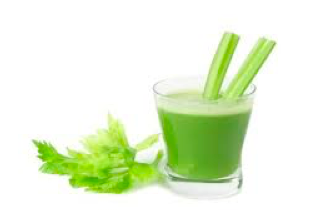
The Toxin Killer is loaded with antioxidants to combat free radicals and cleanse your system of toxins. It’s packed full of healthy greens that give your body a nice dose of essential nutrients.
Serves: 2
Ingredients
- 2 apples
- 1 stick of celery
- Half a cucumber
- Spinach (1 handful)
- Ice (1 cup)
- Lettuce (1 handful)
Preparation
- Peel the apples and the cucumber
- Drop them into the juicer with the lettuce and spinach
- Add ice and blend it for a minute or so.
- Drink nice and cold.
Healthy fact: Did you know that the quercetin in apples has been linked in studies at Cornell University to helping protect your vital brain cells from free radical damage that can lead to Alzheimer’s disease?
http://www.healthambition.com/juicing-recipes-for-weight-loss/
Lemon Lime Green Juice
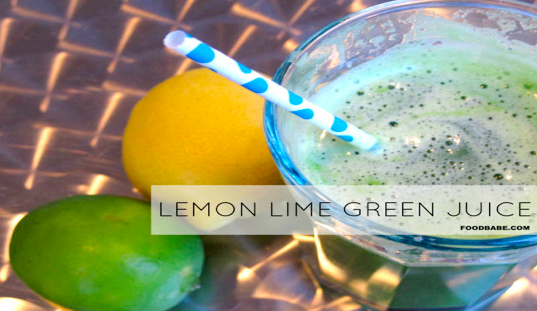
Serves: 2
Ingredients
- 1 bunch of any green of your choice (collards, chard, spinach, kale, dandelion)
- 2 cucumbers
- ½ bunch herbs like parsley, cilantro or mint
- 1 lemon with peel removed
- 1 lime with peel removed
- 1 green apple (optional for added sweetness)
Preparation
- Wash all vegetables thoroughly and place into a large bowl
- Juice each vegetable in this order – greens, herbs, lemon, lime, cucumber
- Stir mixture before serving
Healthy fact: Did you know that lemons and limes contain unique flavonoid compounds that have antioxidant and anti-cancer properties? That cucumbers have both antioxidant and anti-inflammatory properties?
Source: http://foodbabe.com/2013/08/05/juicing-mistakes/
Beet-Carrot-Apple Juice
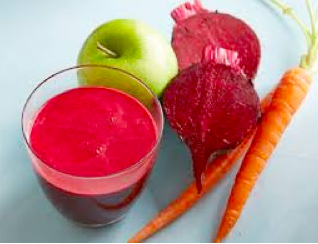
Serves 2
Ingredients
- 2 medium beets, trimmed and scrubbed
- 1 Granny Smith apple, peeled and cored
- 2 medium carrots, peeled
- 1 tablespoon chia seeds, optional
Preparation
- Wash all vegetables thoroughly and place into a large bowl
- Juice each vegetable in this order – beets, apples and carrots
- If using chia seeds, soak them for 5 minutes. Add to juice
- Stir mixture before serving
Health fact: This ruby red juice is a good source of both vitamins C and K. It also contains Beta-carotene, which is converted to vitamin A in the body-good for skin and night vision. Adding chia seeds helps replace the fiber that may be lost in the juicing process.
Source: http://www.foodnetwork.com/recipes/food-network-kitchens/beet-carrot-apple-juice.html
